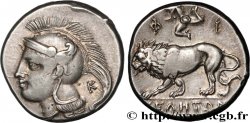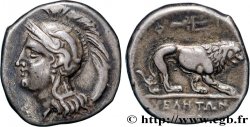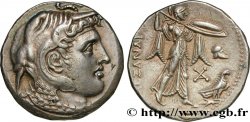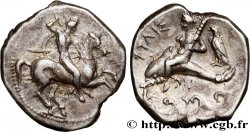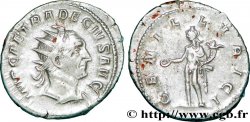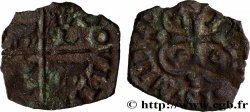v32_0004 - LUCANIA - VELIA Nomos, statère ou didrachme
MONNAIES 32 (2007)
Precio de inicio : 350.00 €
Valoración : 550.00 €
Precio realizado : 500.00 €
Número de ofertas : 3
Oferta más alta : 500.00 €
Precio de inicio : 350.00 €
Valoración : 550.00 €
Precio realizado : 500.00 €
Número de ofertas : 3
Oferta más alta : 500.00 €
Tipo : Nomos, statère ou didrachme
Fecha: c. 293/290 - 280 AC.
Nombre del taller / ciudad: Vélia
Metal: plata
Diámetro: 23 mm
Eje de acuñación: 5 h.
Peso: 7,42 g.
Grado de rareza: R1
Emission: 80e
Comentarios sobre el estado de conservación:
Exemplaire à l’usure régulière sur un flan large, parfaitement centré des deux côtés. A été nettoyé anciennement. Beau portrait. Lion bien venu à la frappe au revers. Une fine patine grise recouvre l’exemplaire
N° en los catálogos de referencia :
Anverso
Descripción del anverso: Tête d'Athéna à gauche, coiffée du casque attique à cimier avec triple aigrette, orné d’un griffon.
Leyenda del anverso: F/AR
Reverso
Descripción del reverso: Lion passant à droite ; caducée tourné à droie, au-dessus.
Leyenda del reverso: UELHTWN
Comentario
Mêmes coins que l’exemplaire du trésor de Lucanie (Burnett 153). Sur cet exemplaire de la série 80, au revers le caducée est décrit avec un filet qui est invisible sur notre exemplaire comme sur de nombreux exemplaires de l’ouvrage de Williams. Très tôt, le monnayage de Vélia a été décrit comme ayant inspiré la drachme lourde de Marseille (LT. 785-791). Certains l’ont même décrit comme un monnayage symmachique : un lion de Vélia étant l’équivalent de deux lions de Marseille. Aujourd’hui, cette théorie est remise en cause, par G. Depeyrot, non sans arguments, mais avec une certaine acrimonie. Le lion de Vélia a pu servir de modèle à celui de Marseille, mais à quelle date ? La frappe à Vélia commence dans la seconde moitié du Ve siècle avant J.-C. pour se poursuivre jusqu’en 281 avant J.-C. À quel moment les Massaliotes auraient-ils emprunté le lion de Vélia ?.
Same dies as the example from the Lucania hoard (Burnett 153). On this example from series 80, on the reverse the caduceus is depicted with a fillet that is invisible on our example as on many examples of Williams's work. Very early on, the coinage of Velia was described as having inspired the heavy drachma of Marseille (LT. 785-791). Some have even described it as a symmacho coinage: one lion of Velia being the equivalent of two lions of Marseille. Today, this theory is challenged by G. Depeyrot, not without arguments, but with a certain acrimony. The lion of Velia could have served as a model for that of Marseille, but at what date? Minting at Velia began in the second half of the 5th century BC and continued until 281 BC. At what point would the Massaliotes have borrowed the lion of Velia?
Same dies as the example from the Lucania hoard (Burnett 153). On this example from series 80, on the reverse the caduceus is depicted with a fillet that is invisible on our example as on many examples of Williams's work. Very early on, the coinage of Velia was described as having inspired the heavy drachma of Marseille (LT. 785-791). Some have even described it as a symmacho coinage: one lion of Velia being the equivalent of two lions of Marseille. Today, this theory is challenged by G. Depeyrot, not without arguments, but with a certain acrimony. The lion of Velia could have served as a model for that of Marseille, but at what date? Minting at Velia began in the second half of the 5th century BC and continued until 281 BC. At what point would the Massaliotes have borrowed the lion of Velia?







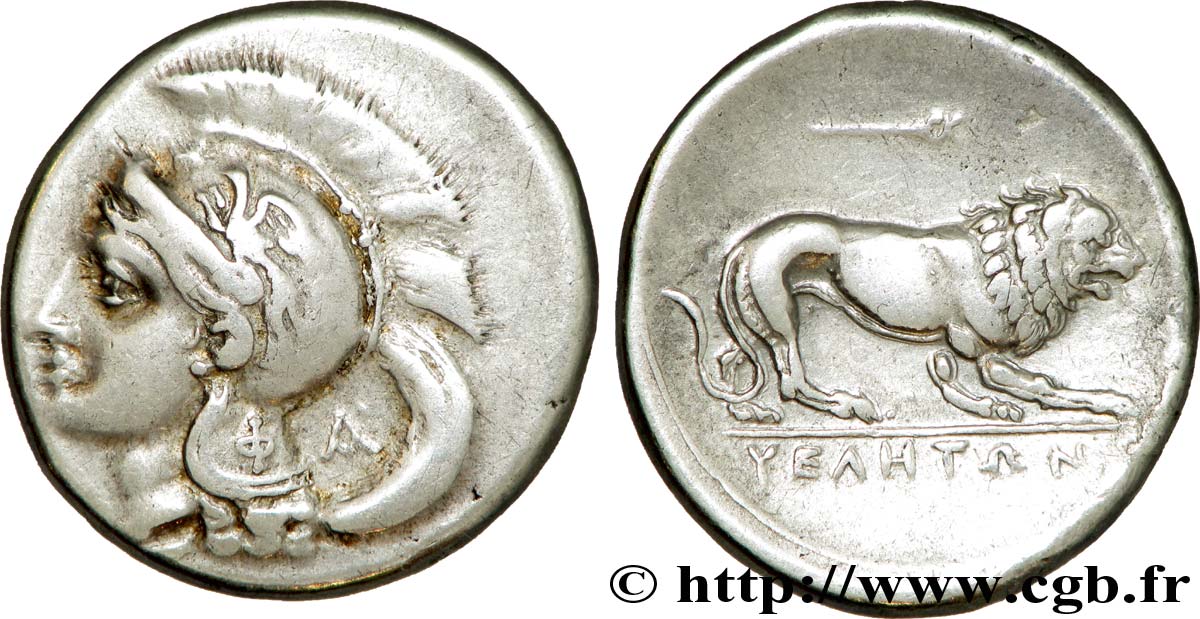
 Informar de un error
Informar de un error Imprimir la página
Imprimir la página Comparte mi selección
Comparte mi selección Haz una pregunta
Haz una pregunta Consignar / vender
Consignar / vender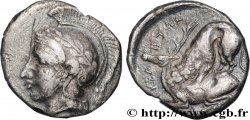
 Descriptivo
Descriptivo